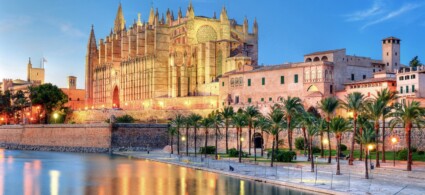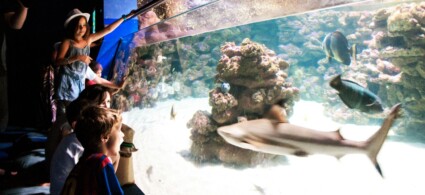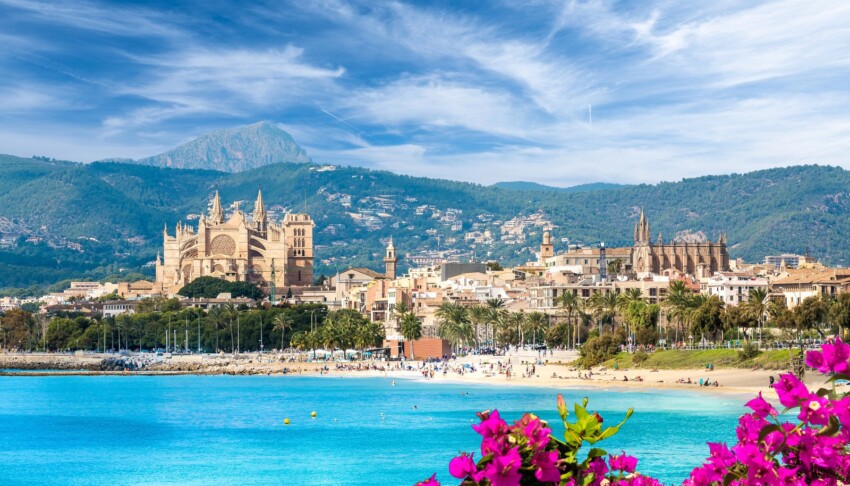

Palma de Mallorca is a lively city located in the north-west of Majorca and attracts thousands of visitors every year. The city attracts many tourists thanks to its rich offer of art, culture, entertainment, gastronomy and relaxation. The island’s main city and the capital of the autonomous community of the Balearic Islands, Palma is now a dynamic centre that still bears the signs of the different dominations that have taken place here.
Palma was founded around 120 B.C. as a Roman encampment and later developed into an important Mediterranean trading centre. Over time, the Romans were succeeded by the Vandals, the Byzantines and then the Arabs, who gave the city the name Medina Mayurqa, a toponym that later gave its name to the entire island. Arab sovereignty over the Balearic archipelago then continued for about three centuries until the arrival of the Aragons.
With the beginning of the 20th century, the Balearic Islands, and Majorca in particular, became an elite tourist destination attracting wealthy holidaymakers mainly from northern Europe attracted by its enviable climate. In the 1950s, however, the real mass tourism began, making Majorca a popular summer destination. Overlooking the Bay of Palma, the city is now the most densely populated area on the island and its streets are home to fine restaurants, historic boutiques, stately mansions, contemporary galleries and famous clubs.
Its alleys often lead to beautiful squares such as Plaza de España and Plaza Mayor, which are surrounded by historic cafés, elegant buildings and shops. As you walk around the city, you will be able to admire that combination of history and modernity that makes Palma a destination where you can organise a trip full of history, relaxation and fun. Here, then, is a mini-guide to the must-see stops in the city!
Palma de Mallorca is a city that knows how to offer its visitors many sites of interest as well as beaches where you can relax in the sun. The city has no shortage of handicraft shops, restaurants serving local cuisine and places to spend a fun evening.
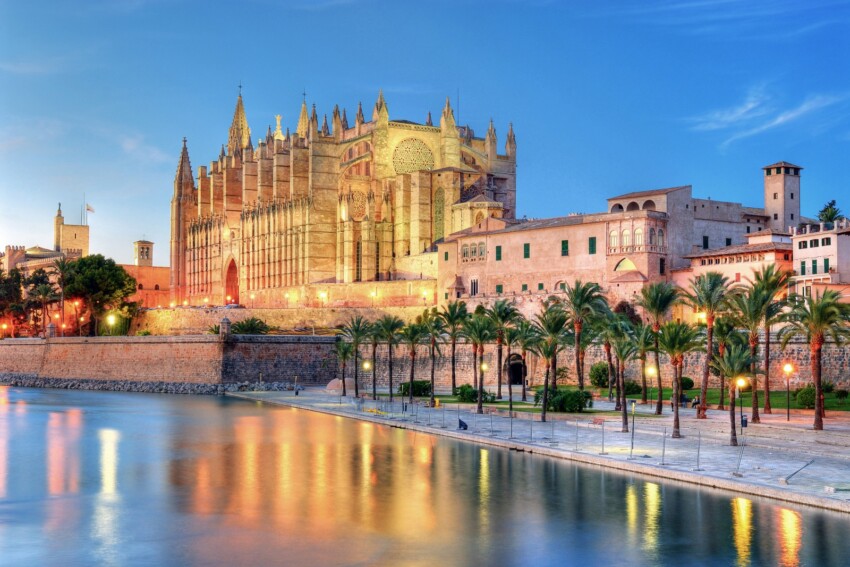
The city’s landmark is certainly the Cathedral of Santa Maria de Palma, also known as La Seu, which stands in the oldest part of the city opposite the harbour. The religious building was erected in the 13th century on the site of a former mosque and is dedicated to Saint Sebastian, the patron saint of Palma. Built in Gothic style, the Cathedral boasts three naves inside and the Royal Chapel where the tombs of King James II and King James III are kept.
The main nave is illuminated by an impressive 12-metre rose window that is considered one of the largest in the world in diameter. Part of the cathedral was seriously damaged during an earthquake in 1851 and so La Seu underwent several renovations in the 20th century. Among the works carried out is the reconfiguration of the choir by architect Antoni Gaudí between 1904 and 1914.
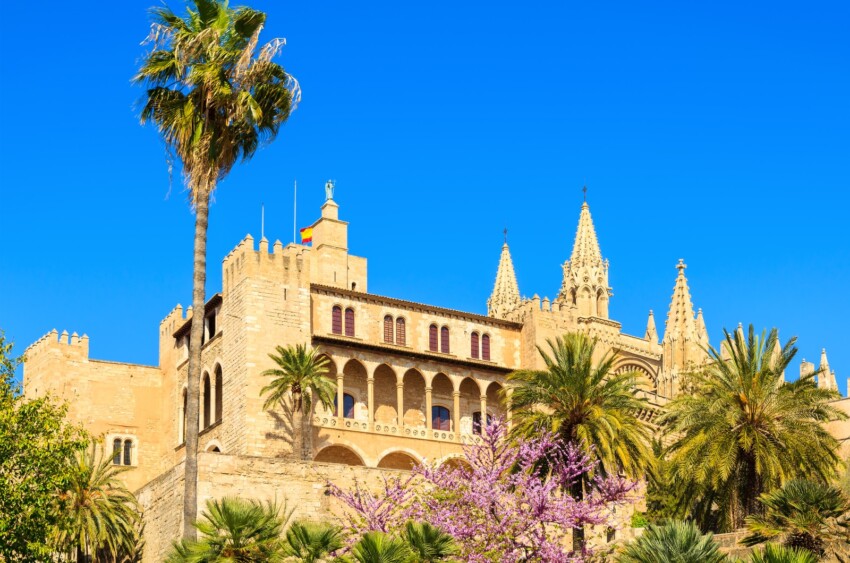
Right next to the Cathedral is the Almudaina Palace, which is the residence of Spanish royalty when they are on the island. An Arab fortress was previously built in this area, which was destroyed in the 13th century to make way for the palace commissioned by James II of Majorca. The design of the building is the work of Pere Salvà who created a construction in Gothic style but with many Arab influences.
The complex consists of a rectangular keep that was used by the King, the Queen’s area, a hall called Tinell, the royal chapel and courtyards. Inside you can admire decorations, several Flemish tapestries from the 17th century and furniture from different historical periods.
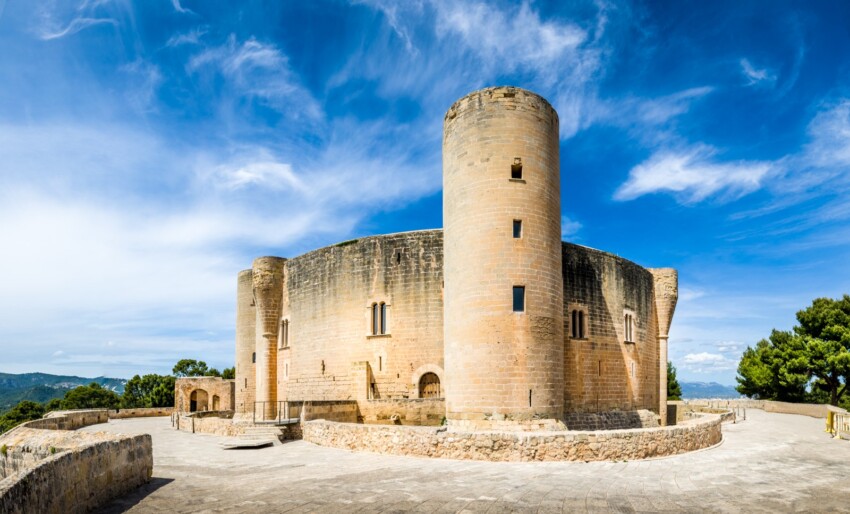
Situated on a hill about 3 km from the city centre, the Castillo de Bellver – Castle of the Belvedere – was commissioned in the 14th century by James II as a royal residence. The design of the castle is also by Pere Salvà. The fortress is one of the few round Gothic castles still standing in Europe. The complex has changed use several times and over time was first used as a prison and then as a state mint. Today, however, the Palma Municipal Museum is located here.
The building is surrounded by a moat, while inside, it has two floors: the ground floor was reserved for servants, while the first floor was the noble floor. The central courtyard still retains the well that was used to collect rainwater. It is worth visiting the Belvedere Castle not only for its historical role but also for the beautiful view of the surrounding area that can be enjoyed from up there.
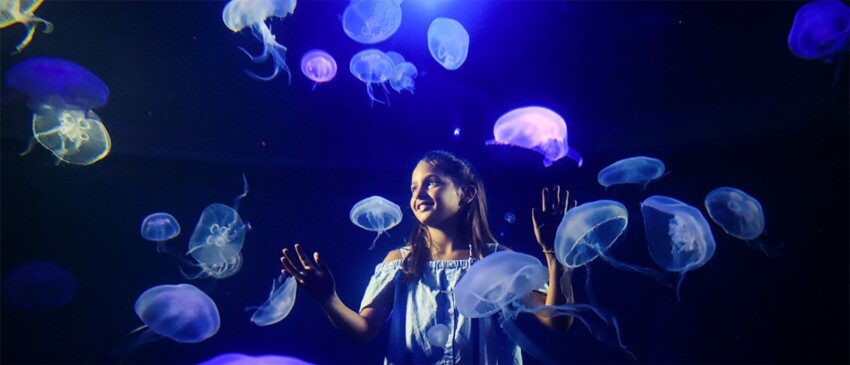
The Palma Aquarium is the aquarium located in Palma de Mallorca and allows all its visitors to learn more about the flora and fauna found not only in the Mediterranean Sea but also in the Pacific and Atlantic Oceans. Through a well-designed tour and the presence of several themed tanks, Palma Aquarium allows adults and children to explore the ecosystems that characterise the waters of our planet.
Palma Aquarium, however, is particularly known for its coral reef conservation and reproduction activities. Inside, in fact, you can admire the largest and most diverse collection of live corals in Europe with species from seas all over the world. The aquarium also offers its visitors very special experiences such as diving with sharks and rays and the 3D cinema for swimming with whales.
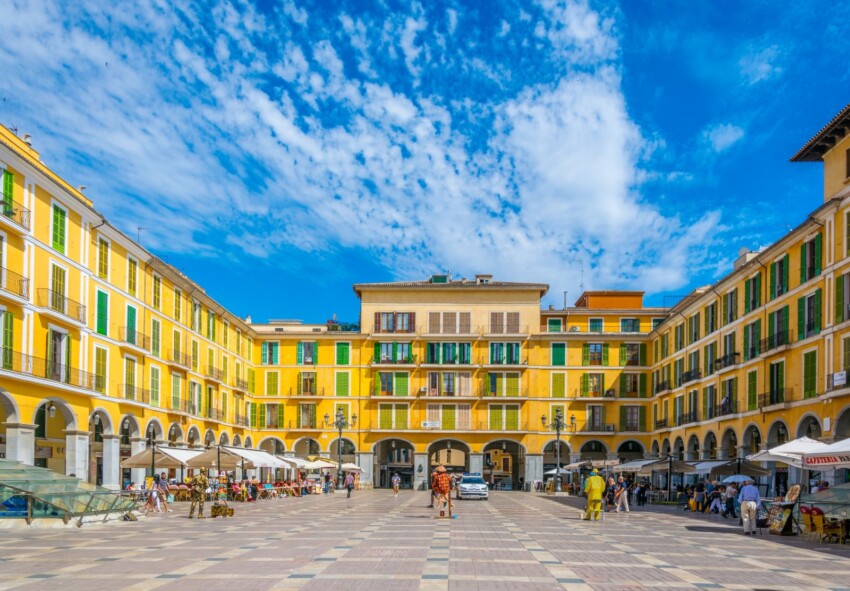
The heart of Palma de Mallorca’s city centre is Plaza Mayor, an elegant square surrounded by stately homes and 14th century palaces that once housed the famous Spanish Inquisition and now host cafés and restaurants. Shoppers can head here to visit the enormous El Corte Ingles department store located between Plaza de Espana and Plaza Mayor.
The square is rectangular in shape and during warm summer evenings it becomes a meeting place but also the venue for events, shows and markets. Important shopping streets such as Carrer Jaume II, La Rambla and Avenida Jaime III depart from the square.
Plaza de Espana is known for being an entry point to the historical city centre and a nerve centre for public transport on the island. Here, in fact, you will find the Intermodal Station (where most of the EMT lines stop), the railway station to Inca and the Art Nouveau stop of the Ferrocarril de Soller, a railway line that connects Palma to the village of Soller.
Numerous streets depart from the square, such as the avenues of Juan March and Alexandre Rosselló, the Parque de las Estaciones and the street Eusebio Estada. The square is also home to lively cafés and bars serving tapas and typical dishes. It is also home to the Mercat de l’Olivar where fruit and vegetables, cheeses and traditional delicacies are sold.
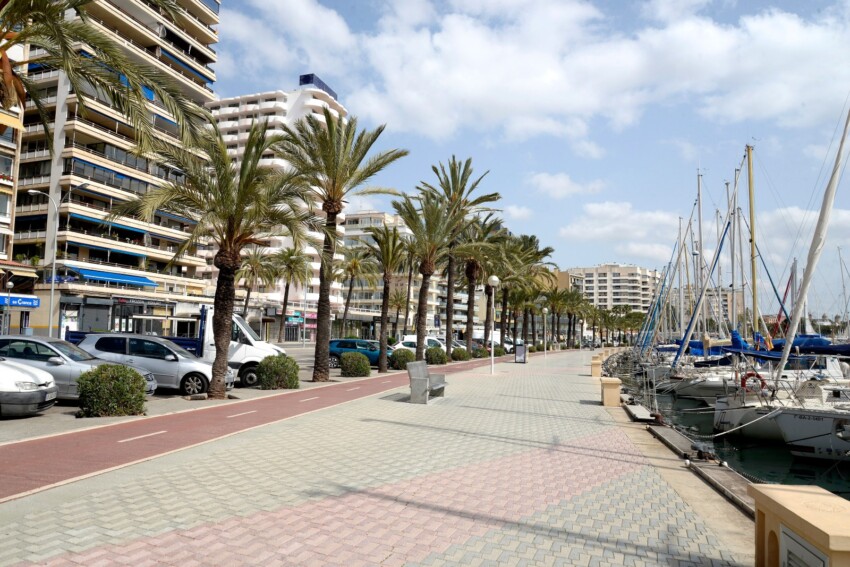
If you’re in Palma, you can’t miss a relaxing walk along the Paseo Marítimo, the famous promenade that runs alongside the city’s marina. On one side you can admire large yachts anchored while on the other there are palm trees and benches where you can rest or sit and watch a beautiful sunset.
The area is also characterised by the presence of bars, nightclubs and restaurants. The Paseo Marítimo is a particularly popular area for nightlife as several clubs organise parties and evenings with live music.
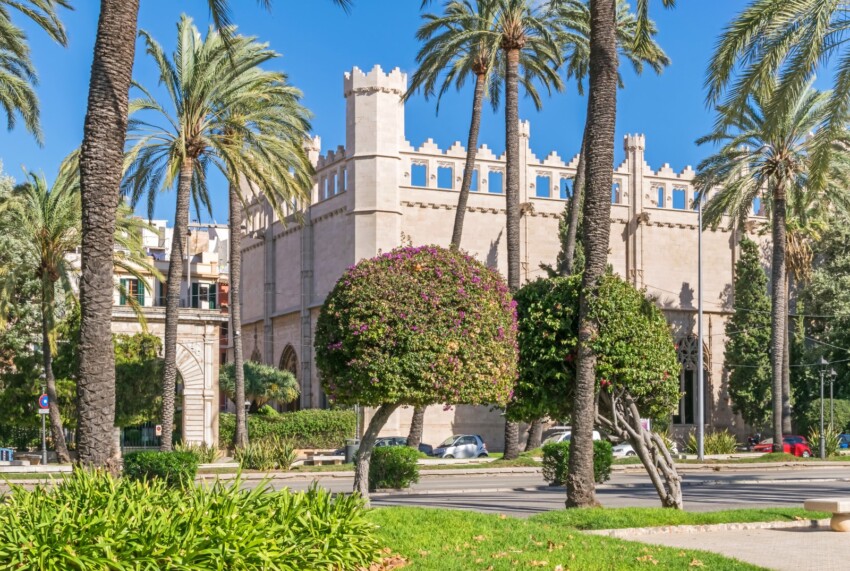
La Llotja is a building on Palma’s seafront and is one of the most charming sites on the entire island of Majorca. Built by architect Guillem Sagrera in the 15th century, this complex was a kind of interport that served as a storage and trading centre when Majorca was an important commercial centre. When Palma diminished its role in trade, the building changed its use several times until it was used as a warehouse for goods and weapons during the War of Independence. At the end of the 19th century, the building became an art gallery and is still an exhibition space today.
Built in the Gothic style, the building boasts four octagonal towers, built at the four corners, and 10 smaller towers that acted as buttresses. Inside and out, one can admire magnificent sculptural details such as the Angel Defensor de los Mercaderes above the main portal. Inside, there are four naves separated by six helicoidal columns without capitals, which were also imitated in the construction of Valencia’s fish market.
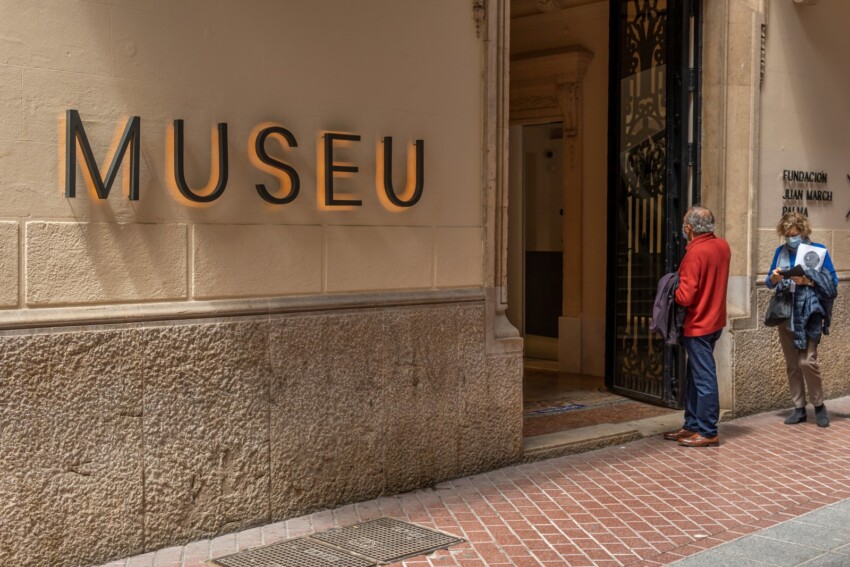
To find out more about the history of the island of Majorca, you should not miss a visit to this beautiful museum located inside a house-palace built in the 16th century and popularly known as the Casa de la Gran Cristiana. The house retains much of its original pentagonal Baroque structure to which alterations were made in the 19th century.
The site has one main site and two secondary sites. The main site is in Palma with sections dedicated to archaeology and fine arts. The museum tour here allows visitors to admire archaeological finds from the Roman period, Moorish evidence and various objects of Christian art.
A second branch is located in Muro and houses an ethnological section testifying to what Majorca was like before it became a tourist destination. A third branch is in Alcúdia and is known as the Monographic Museum of Pollentia due to its connection with the remains of this Roman city.
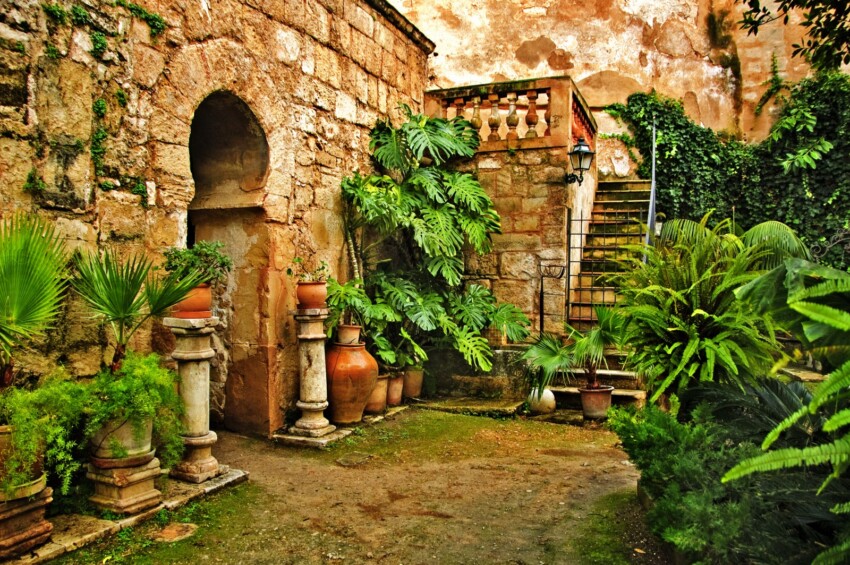
One of the few surviving architectural vestiges of the Arab era in Palma de Mallorca is the Arab Baths located in the old city area. Located in the majestic garden of Can Pit, the Palma Baths are a must-see during a stay in the city.
Although quite small in size, the historical and architectural value of the Arab Baths is very important and the atmosphere during a visit is truly magical. Inside there is a central hall surrounded by eight columns flanked by a caldarium and a tepidarium.
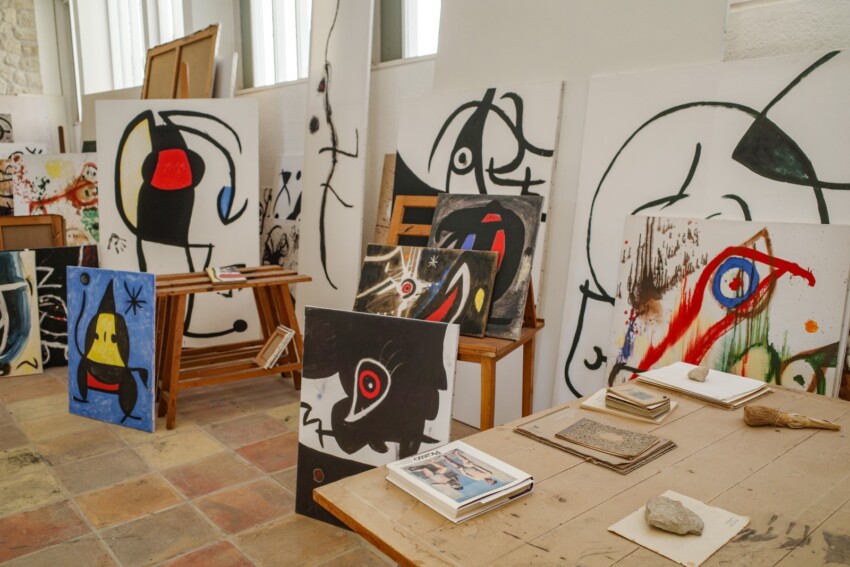
During the last years of his life, the artist Joan Miró (1893 – 1983) lived in Majorca, where he created two studios that have come down to us intact just as they were at the time. The two named studios, Taller Sert and Son Boter, still preserve canvases, brushes, floor stains and drafts of works drawn in charcoal.
To visit these two studios, both of which have been declared Heritage of Cultural Interest (BIC), is to learn more about the creative process of this great 20th century artist. In 1992, the Moneo Palace was added to the complex, which now houses the Joan Miró Foundation. The building was designed by architect Rafael Moneo, who integrated it well with its natural surroundings.
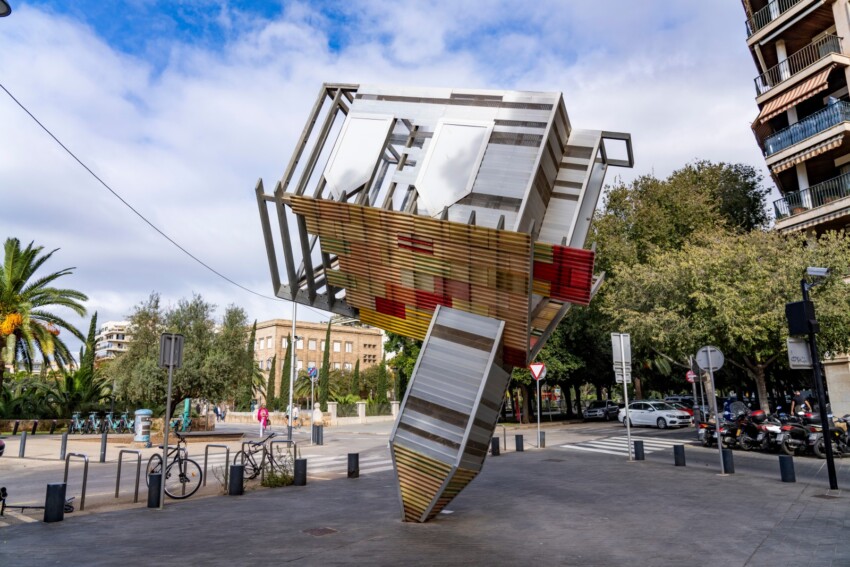
The Museum of Contemporary Art Es Baluard is located inside the Bastion Sant Pere, not too far from La Seu Cathedral. It covers more than 5,000 square metres, spread over 3 floors and contains collections of works by important artists from the 19th century to the present day. Thus, here it is possible to admire works by authors such as Cézanne, Gauguin, Picasso, Miró, Magritte, Polke, Barceló or Schnabel.
Another section is devoted to works of Mediterranean landscape painting and the creations of authors who are in some way connected with the Balearic archipelago, such as Santiago Rusiñol, Anglada-Camarasa or Gelabert. In addition to the permanent collection, the museum often organises events and temporary exhibitions. On the top floor, there is a beautiful open-air terrace with a breathtaking view of the Port of Palma.
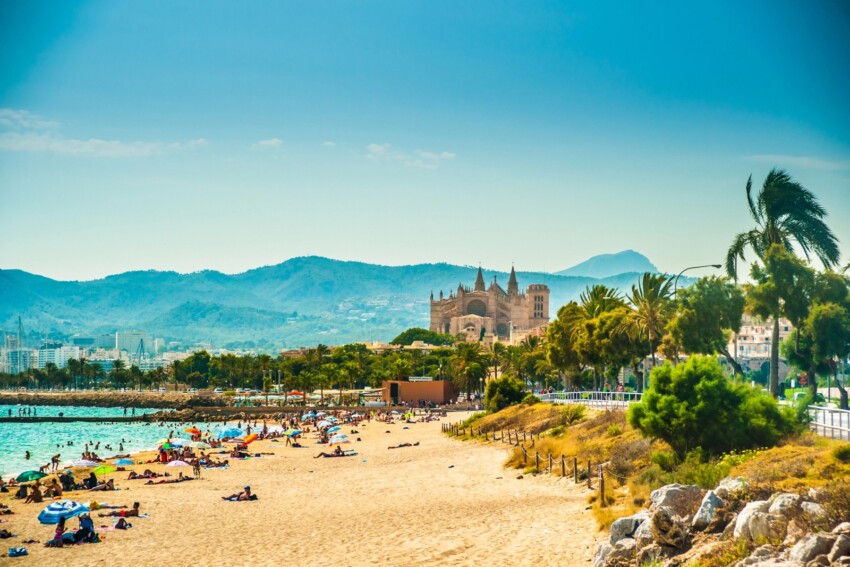
Majorca boasts a long coastline that allows for relaxing days in the sun. The common characteristic of this stretch of coastline is the calm, crystal-clear blue sea.
The closest beach to the centre of Palma de Mallorca is Platja de Can Pere Antoni13, a 750-metre stretch of fine, golden sand. This beach is free and does not have services such as sunbed and umbrella hire, but is equipped with toilets and showers.
Two other beaches in the area are Playa Ciudad Jardín14 and Platja de Can Pastilla15, which boast a fine sandy beach bathed by a sea with a slowly sloping seabed. Due to their characteristics and the services offered, these beaches are popular with families with children.
Those looking for quieter areas can go to Cala Comtessa, a bay located about 9 km from Palma and surrounded by lush vegetation and low cliffs. Although it is wilder than the other beaches in the area, Cala Comtessa offers several services including the rental of beach umbrellas.
In the following map you can see the location of the main places of interest mentioned in this article.
After visiting the city, the beautiful sights and beaches of Palma de Mallorca, all you need to do is dedicate a half day to a boat tour of the Bay of Palma or perhaps a full day with a longer tour. The following are the best-selling and best-reviewed boat experiences we recommend.
Palma de Mallorca is a city with a wide range of accommodation to stay in. Large hotel chains, hostels, flats and small B&Bs are among the most popular establishments in the city. The best areas to stay in are the old town and the Paseo Maritimo.
If you are a nightlife lover, the Paseo Maritimo area is certainly the best quarter as the numerous clubs make it a lively area until late at night. Those looking for a bit more tranquillity, on the other hand, should prefer the old town area.
Due to its location, Palma de Mallorca is easily accessible from other locations both on and off the island. The airport Son Sant Joan in Palma de Mallorca is located 8 km from the capital and is well connected to other Spanish and European cities also thanks to flights of numerous low-cost airlines.
From the airport it is possible to reach Palma by the EMT bus service or by renting a car and driving along the Ma-19. Palma is also easily reached by ferry from major Spanish cities such as Barcelona, Valencia, Ibiza and Alicante. Daily connections also operate with the island of Menorca.
What's the weather at Palma de Mallorca? Below are the temperatures and the weather forecast at Palma de Mallorca for the next few days.
Palma de Mallorca is the main city on the island of Majorca and the capital of the autonomous community of the Balearic Islands. It is 30 km from Magaluf, 35 km from Port de Sóller and 60 km from Alcúdia.
